
Non-fiction
I know: this site is called Fictional Cities
but...you know
how the truth can be stranger
see also the pages devoted to...
The Victorian City
Tunnels
The
Thames
Spitalfields
Abandoned Buildings
Cakes
|
|
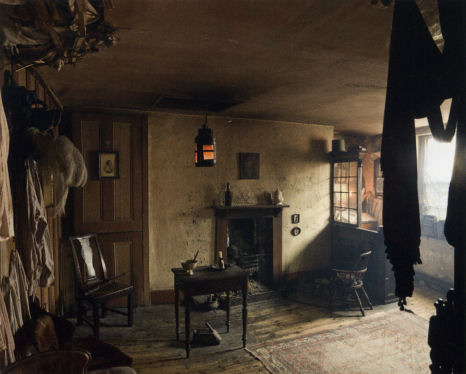 |
|
|
|
Rachel Howard and Bill Nash Secret London |
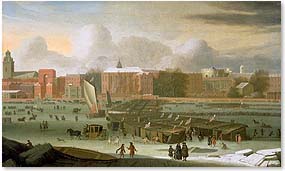
|
Jenny Linford The London Cookbook If you're looking for a stylish, attractive and comprehensive introduction to the food and foodie places of London then this book's for you. The content's pretty evenly divided between recipes and articles. The articles deal in a brisk and upbeat way with the cuisines of seemingly every type and country to be found in London. Pie & mash shops, disappearing cafes, Borough Market, Chelsea buns, East End bagel shops, Soho Italian delis and coffee shops - all the expected topics are dealt with in informed and anecdotal fashion. There are lots of interviews with shop and stall owners and the recipes mostly come courtesy of real people. A lot of these people seem to be related to the author, and the one's that aren't are often unknown and unintroduced and so are presumably her mates. The North London bias is a little too noticeable too. But the recipes are tempting, and often temptingly easy-looking, and to pick the book up and flip through it's tasteful photos and mouth-watering content is to want to take it home. I for one learnt something about the history of London's milk supply and that I need to get myself out to Kew to find the teashop that makes Maids of Honour tarts. Jamie Manners The Seven Noses of Soho: And 191 Other Curious Details from the Streets of London 2015 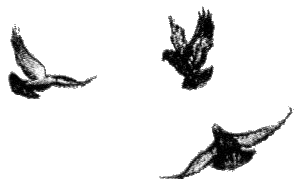 As you're no doubt aware, and as Private Eye never tires of reporting, book reviews in the broadsheet press are mostly written by friends, lovers, relations or employees of the author. So in a spirit of transparency I have to admit that Jamie is a pal, ex-colleague and an all-round good chap. But opening his book (on the tube home from his book launch) I was reminded of the Gore Vidal quote 'Every time a friend succeeds, I die a little', so it balances out. Because this is just such a damn attractive and well-designed book. The entries are arranged along tube lines, a smart choice as this is how most Londoners mentally map their city, and each one is devoted to a quirky site or detail. He includes some of, but mostly goes beyond, the usual suspects of such 'Secret London'-type volumes - even when he writes about the more well-known unknowns he often has a new and sly slant. You'd have to be a smugly clued-up and very miserable London lover not be enlightened and entertained by this book. Lucy Moore The Thieves' Opera The Remarkable lives and deaths of Jonathan Wild, thief-taker, and Jack Sheppard, house-breaker Although ostensibly a book about the careers of the named villains, the particular pleasure of this book is the digressions and details of London life and crime in the eighteenth century that the author indulges in. If you've ever thought that you might like to have lived at this time, with Hawksmoor's churches and Adam's Adelphi going up, Hogarth painting, coffee shops full of wags and wastrels... read this book. After you've read about the almost total lawlessness of the streets, the corruption in government and the Fleet ditch, and the real danger of bits of buildings, badly-built after the fire, falling on your bonce you won't want your time-machine to linger more than a day or so I think. And as to the tricks that the ladies taught their lap-dogs...how do you think that they got that name? A book both enjoyable and educational. For Further Scenes from the Hogarthian underworld, see Moore's book Con Men and Cutpurses, which deals with some less famous rogues.
|
 Simon Pope London Walking A handbook
for survival Simon Pope London Walking A handbook
for survival An unusual book this, in that it will appeal to fans of both Iain Sinclair and Nicholson Baker. It concerns itself less with where and more with how and why to walk. Where to walk comes into it too, as the author and a friend do an East to West trek, from sunrise to sunset, similar to the sort of walk undertaken by Mr Sinclair below. There are chapters dealing with types of walking and techniques of walking - how to navigate and what to look for - open spaces, crossing the road and the river, dealing with the rush hour, the weather and the kerb. And it's run through with bits of psychogeography, talk of buried routes, and humour, not least in the crappy but funny drawings. This all comes together in the chapter dealing with the City's lines of power which connect the psychically strong areas. The book advises on how to tap into these forces - take a packet of Wrigley Spearmint gum and drop the sticks, as they fall to the ground the arrows on the wrappers should magically align you. Anna Quindlen Imagined London A tour of the World's greatest fictional city A shame to have this book tucked away in this far corner as it is, as you can see from the subtitle, more than a little attuned to the concerns of this site. The book was occasioned by the author's first visit to London after many years of reading about the place and developing a literature-created picture. The book is about how this picture stands up to the reality of modern London. Pretty well, it turns out, as Ms Q goes on pilgrimages visiting places related to Dickens, Sherlock Homes and the Forsytes, amongst others. It's not a long book, nor is it a detailed or factually fascinating read. It's a rambling and a pondering sorta book, rather than a book of sharp-eyed walks. But it did a fine job of freshening up my view of my town, through the perceptions of someone overlaying fiction with experience - the opposite to the way my London was built. And it's always good to see your manor through a stranger's eyes.
Heather Reyes ed. city-lit - London |
|
|
Cathy Ross Bollardology You'll buy this book for the photos, and the wacky title, but then stick around for the smart text, which put bollards into the wider contexts of, for example, London's COVID-lockdown emptiness and the changes in the way the city is being used. How circumstances have changed, and bollards along with them, continues as a theme in this book. The undoubted unsung hero here is William Haywood who, in the 19th century, at the time when the modern city took its current form, was responsible for bollards, traffic control, an Holborn Viaduct. That he did so much and is so unsung is cause for conjecture. He was known to be spikey, left his wife and lived with his mistress, and there was much corporate power-play at the time. There is even the suggestion that he may have been the mysterious Walter, author of My Secret Life the famous 8-volume milestone in the history of pornography. But this theory is as unconvincing and based on merely circumstantial evidence as most identifications of this still mysterious author. The text/photo balance here is just right - the history as related is nicely opinionated and not waffly, the photos are good and genuine, not fashionably enhanced, as is the current obtrusive tendency. We canter through the decades, tracing changes in fashion, modes of transport, theories of traffic calming, and security needs. The current standard octagonal bollard is the C3 HVM (Hostile Vehicle Mitigation). |
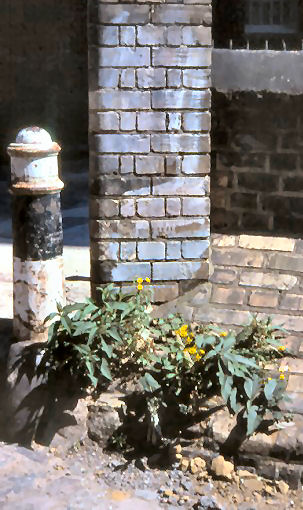 |
|
|
|
Claire Tomalin Samuel Pepys - the Unequalled Self A deserved winner of praise and prizes, this biography is the ideal way in for all of us who have yet to attempt a serious go at the diaries. Tomalin takes you through Pepys' life from well before he started writing his diaries to well after. The diaries actually only cover about ten years of the man's life, but what years! War, plague, politicking and the Fire are famously well documented, as well as Sam's marriage and many dalliances. His humanity and foibles shine through the diary and this book, and both provide insights and grip. He knows, makes friends with, or enemies of most of the most worthies of the 17th century, which explains why the diaries are important documents. His humanity and perception make them much more. I read this with a selection from the diaries to hand (The World of Samuel Pepys by Robert & Linnet Latham) - useful for following up the more intriguing references. Charles Dickens - a life Did the world need another biography of Dickens? You'd have thought not, especially as Claire Tomalin herself has already written a book about Dickens's relationship with Ellen Ternan, the controversial (and still sometimes denied) revelation that goes 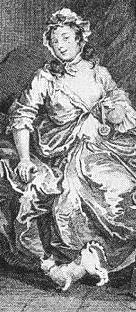 towards giving us a truer picture of a very human genius. This book is long
but breezes by. And it's bracing, as Tomalin
doesn't stint on criticism of his work or condemnation
of the shoddy way he treats his wife, and how he fails to live up to his
saintly image. The real man who emerges is understandable, still admirable,
but no more a saint than the rest of us.
towards giving us a truer picture of a very human genius. This book is long
but breezes by. And it's bracing, as Tomalin
doesn't stint on criticism of his work or condemnation
of the shoddy way he treats his wife, and how he fails to live up to his
saintly image. The real man who emerges is understandable, still admirable,
but no more a saint than the rest of us.Jenny Uglow Hogarth Some people become synonymous with their times and their place. To say this of Hogarth and 18th century London is trite, obvious, and true. Jenny Uglow places him against his background deftly and evocatively, and conjures up the London we associate with Hogarth in all its grim and grimy glory. She tells of the people and topics dealt with in the novels in the 18th century novels section above, weaving all of these strands into a big fragrant and convincing tapestry with Hogarth's prints pinned to it. A big and gripping book. |
Facsimile Guides